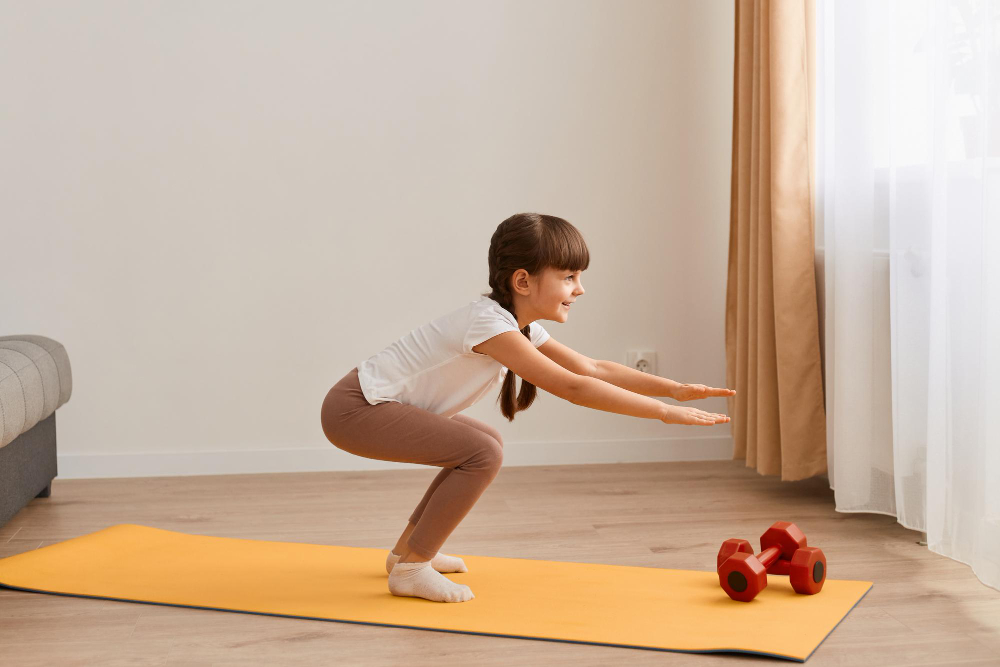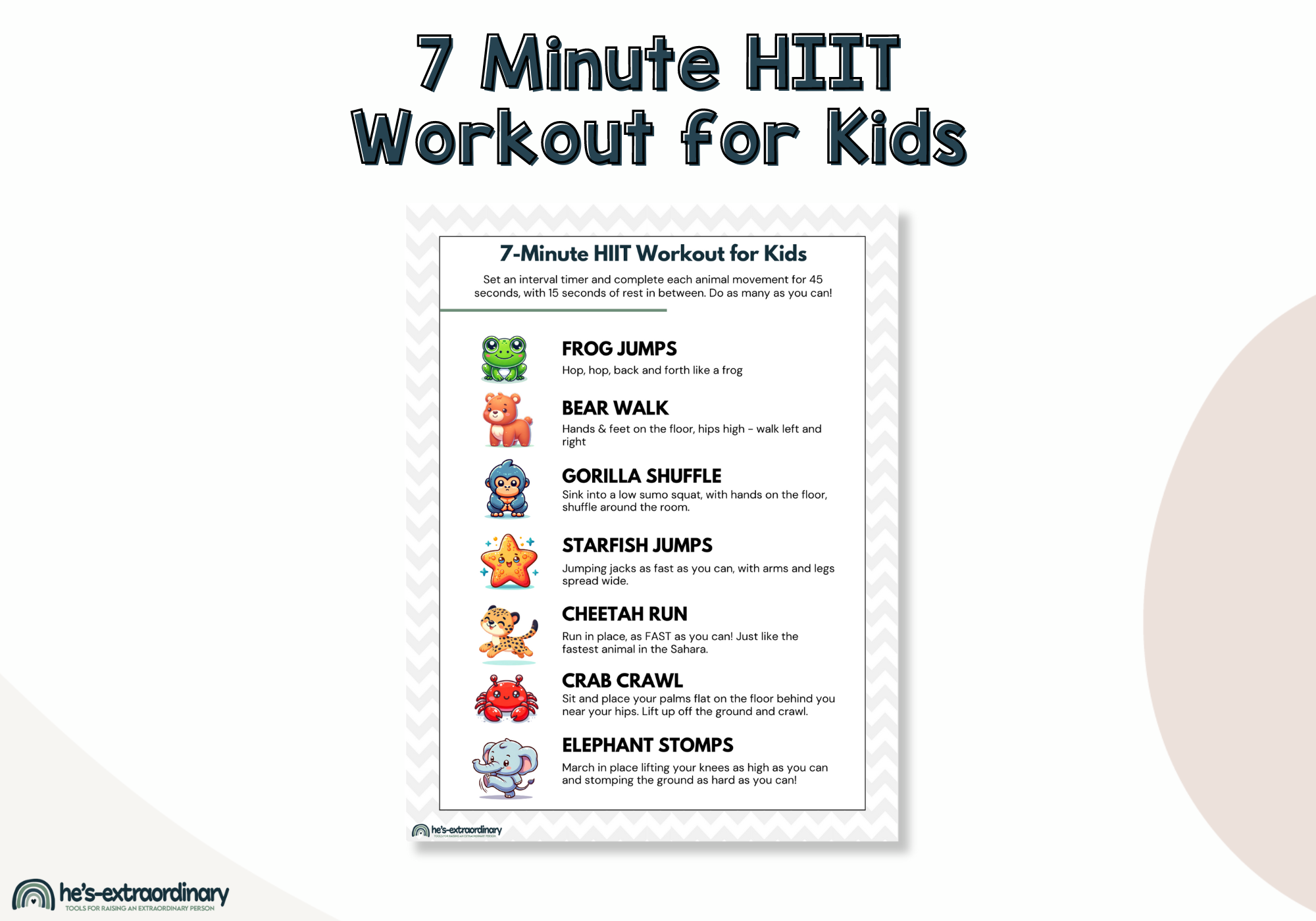Improve Emotional Regulation In Just 7 Minutes Per Day (Animal HIIT Workout for Kids)
What’s inside this article: An in-depth look at how exercise influences the neurotransmitters in the brain to improve emotional regulation, plus instructions for a fun workout for kids, and a free printable poster to use with your children.
It sounds surprising, but you can improve emotional regulation in your child in as little as 7 minutes per day. I’ll explain how.
Our lives are so busy it makes it hard to make time for new, time-consuming activities.
But 7 minutes is such a short period of time and can have a huge impact on your child’s emotional regulation skills.
Emotional Regulation and Dysregulation
Emotional regulation is the ability to manage and respond to an emotional experience effectively. People unconsciously use emotion regulation strategies to cope with difficult or stressful situations many times throughout each day.
When a child experiences dysregulation, they aren’t able to manage or cope with their negative emotions.
These emotions can elicit a nervous system response, leading to over-the-top reactions, outbursts, or meltdowns.
This is extremely common for neurodivergent children, such as those who are autistic, have ADHD, or sensory processing differences.
Emotional regulation can be achieved in two ways:
- Self-regulation means you can regulate your emotions on your own.
- Co-regulation (sometimes called mutual regulation) means you need someone to help you regulate your emotions.
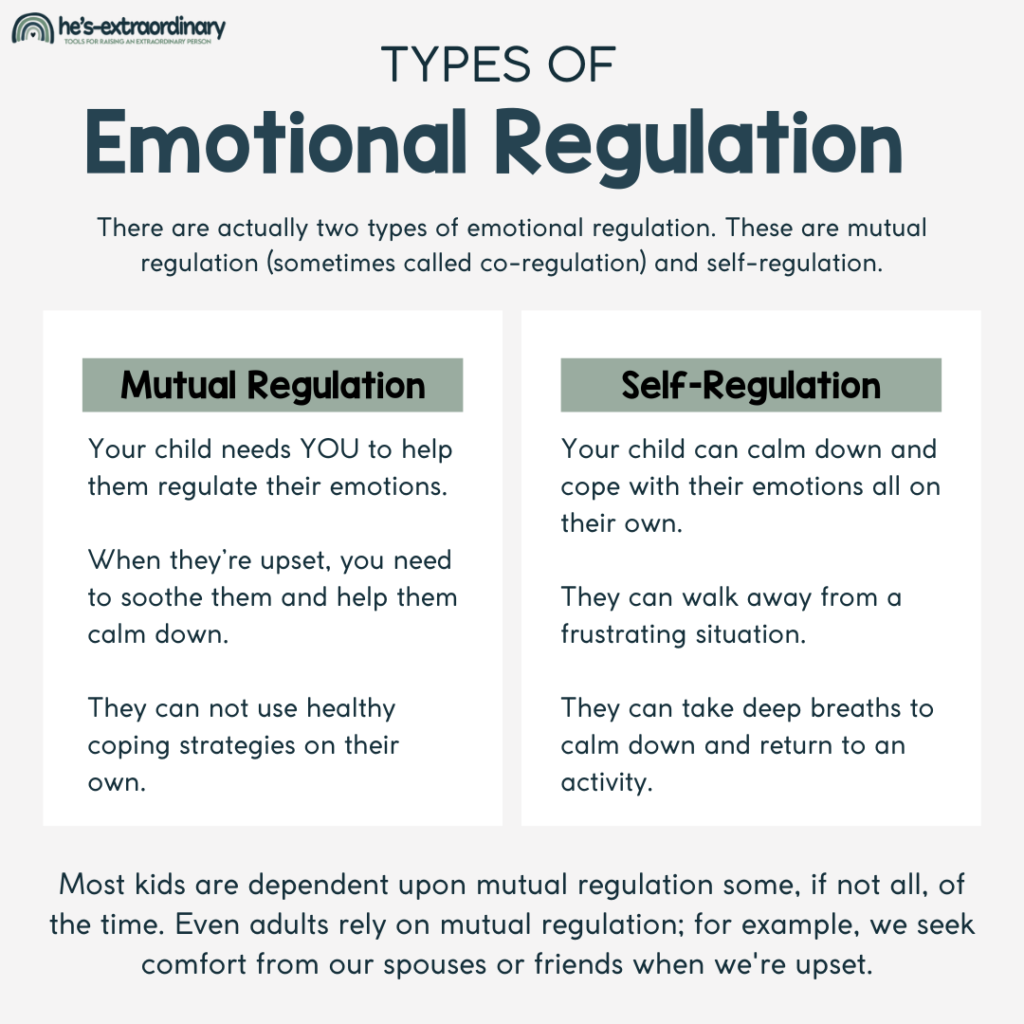
Most kids need help sometimes, or even all the time, with emotional regulation. This is normal; even adults seek comfort from their loved ones when they are emotional. However, we should aim to teach children to regulate their emotions independently during minor day-to-day situations.
Exercise is one way to help children self-regulate, and it doesn’t need to be a time-consuming activity. Short intensive bursts of physical activity provide better results than longer durations of exercise with less impact.
I have created a 7-minute workout designed to be fun for kids and high-impact for maximum benefits!
How Does Exercise Improve Emotional Regulation?
It’s amazing how this works.
Our mind, brain, and body are all interconnected.
When your child is dysregulated, their brain produces high levels of the stress hormone cortisol. It also produces adrenaline. An increase in cortisol and adrenaline spikes anxiety and dysregulation by activating the sympathetic nervous system.
The sympathetic nervous system is the part of your nervous system that controls the fight-or-flight instinct and plays a key role in our responses to stressful situations. When fight or flight is activated, there is a huge spike in adrenaline, and this is what occurs during a meltdown.
When this occurs, functional and social communication skills decrease – because the brain can’t access the prefrontal cortex, which controls executive functioning.
Some research suggests that during a meltdown, an individual’s IQ even drops by 30 points.
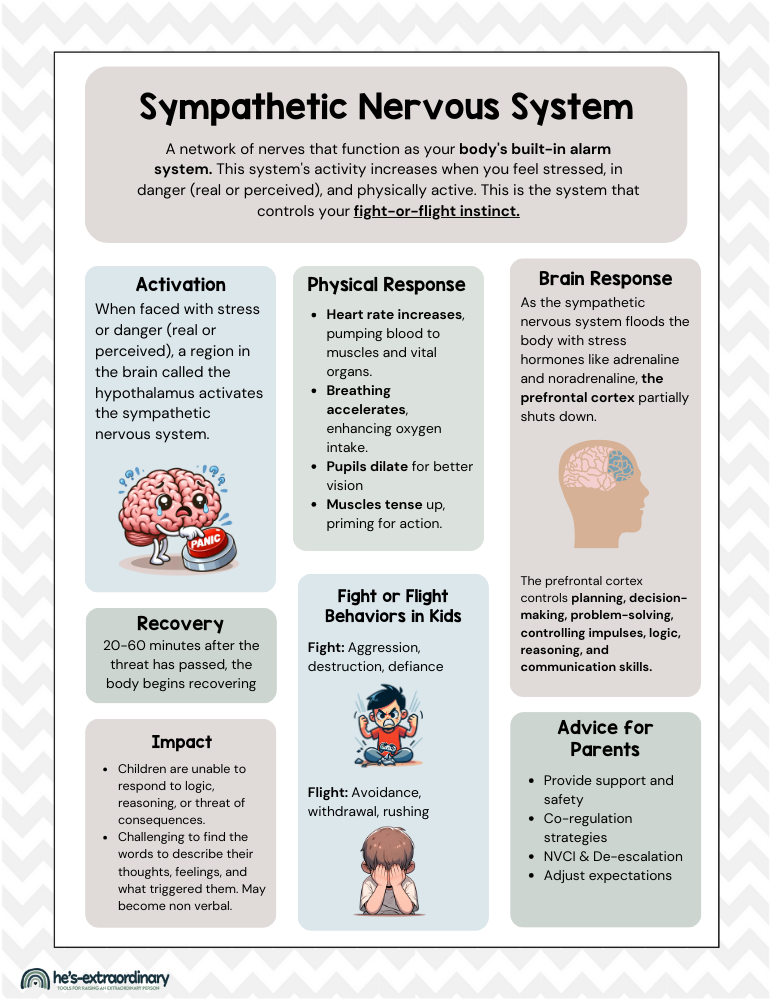
Exercise has been proven to reduce cortisol and adrenaline levels, which helps improve emotional regulation. Exercise also reduces anxiety because it causes the brain to produce more dopamine and endorphins, the brain’s natural mood lifters.
When our brains have lower cortisol levels and more dopamine levels, self-regulation is much easier.
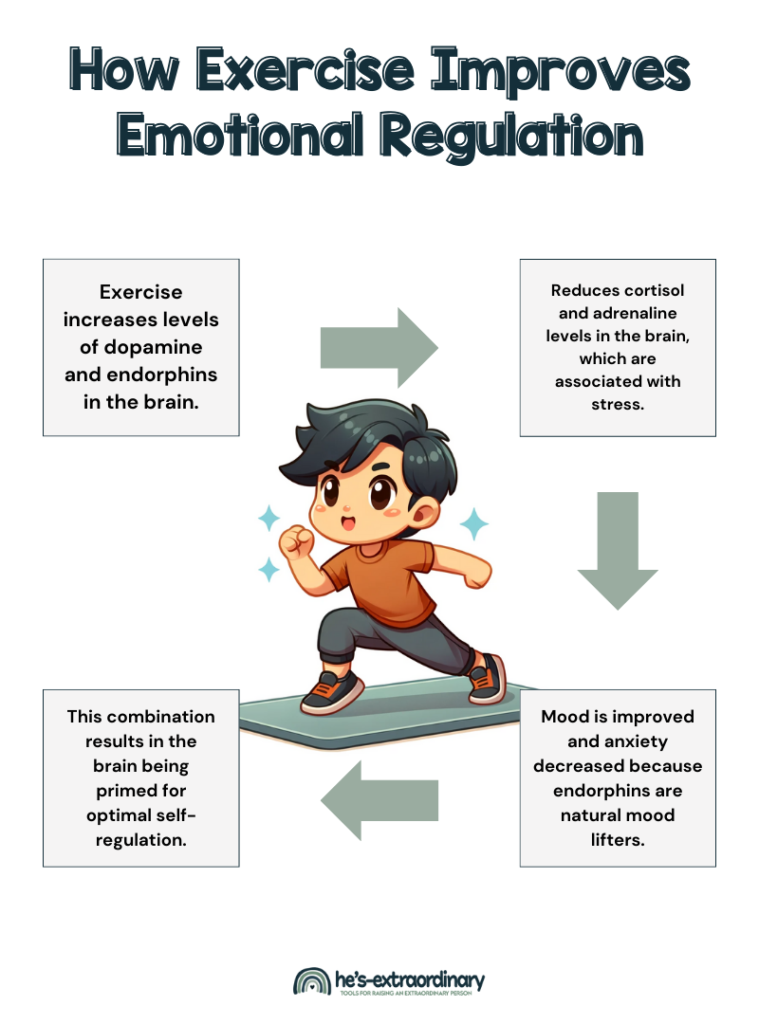
The benefits don’t stop there, though—the increased dopamine levels improve the functions of synapses in the brain. As a result, communication and information retrieval abilities improve. This means that overall, the brain is in a better state for learning.
7-Minute HIIT Workout for Emotional Regulation
These are the instructions for the 7-minute animal-themed HIIT workout I created to help kids with emotional regulation. You can download the printable poster and instructions below.
For this workout, you will need:
- An interval timer (I use an app called Interval Timer)
- Water
- Sneakers
- Music
- Optional: kids yoga mat
That’s it. You can do this exercise anywhere.
Shove some furniture out of the way if you need to make a little more room.
Ideally, this should be done first thing in the morning, especially on school days. These exercises provide unparalleled stimuli, creating an environment where the brain is ready and willing to learn.
Teachers can also use this workout during the day to offer their students a brain break. This is particularly helpful on days when the weather doesn’t allow students to play outside during break times.
However, I’ve also received feedback from parents that doing this workout a second time after school helps reduce after-school meltdowns because many kids struggle with emotional regulation in the afternoon.
Before You Begin:
Set your interval timer for 7 rounds of 45 seconds of work and 15 seconds of rest, totaling 7 minutes.
Get your kiddo’s favorite upbeat music on, and get ready to go hard. Your child (and you! You’ve got to model what you want to see!) should be doing as many repetitions of these exercises as possible in 45 seconds.
You actually want to be tired, breathing heavily, and your heartbeat elevated at the end of these 7 minutes.
These exercises are all animal-themed, by the way, to make them fun for kids!
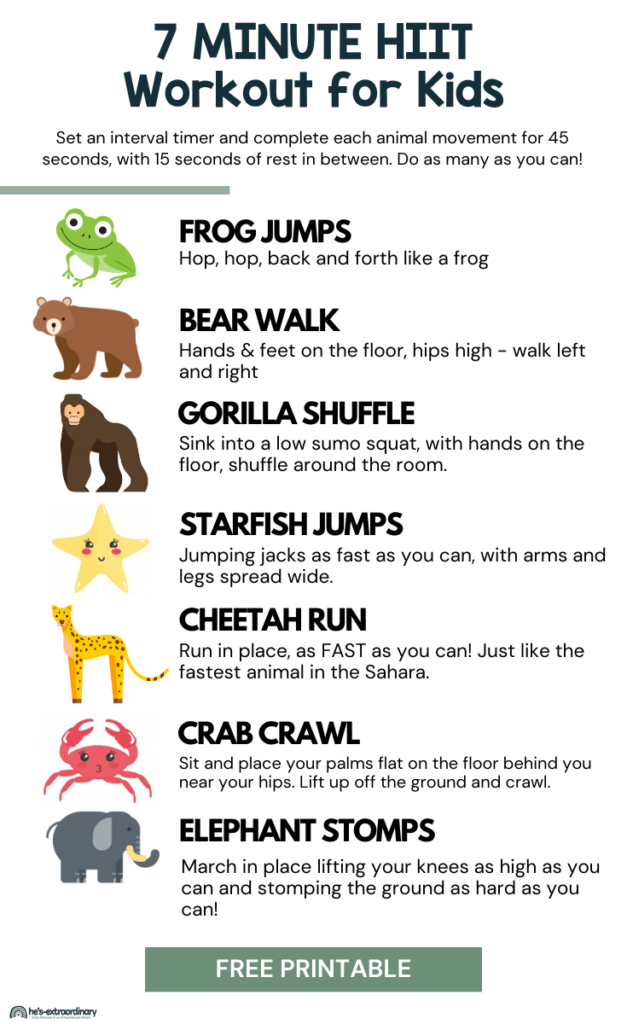
Instructions
Frog Hops
These are exactly what they sound like. Hop back and forth like a frog. Depending on how much room you have, you may need to hop in one place.
Bear Walk
Place your hands and feet on the floor. Your hips and butt should be in the air, higher than your head. On all fours, take two steps forward and two steps back, then repeat.
Gorilla Shuffles
Sink down into a low sumo squat and place your hands on the ground between your feet. Shuffle a few steps to the left and then back a few steps to the right. Maintain the squat and ape-like posture throughout the entire movement.
Starfish Jumps
These are jumping jacks! Do as many as you can, arms and legs spread wide like a starfish!
Cheetah Run
Run in place as fast as you can!
Crab Crawl
Sit with your knees bent and place your palms flat on the floor behind you near your hips. Lift your body off the ground and “walk” on all fours forward and backward.
Elephant Stomps
Stand with your feet hip-width apart and stomp, raising your knees to hip level or as high as you can. Try to hit the palms of your hands with your knees.
And You’re Done!
Take some time to cool down slowly.
Do some stretches or yoga poses and allow your heart rate to return to normal. Those 7 minutes will give you and your kiddos a boost that will leave you feeling great for hours!
The animal theme makes this workout enjoyable for kids. Encourage them to use their imagination and make this workout feel like play.
If your kids love this workout, you can also try this 8-minute workout for kids.
Want a printable version of this workout?
Prefer to Follow Along with a Video?
We recently had Mike of MVT Fitness film this animal HIIT workout for us, so now you and your kids can follow along with the video together! You can watch the video here.
Other Benefits of Exercise:
Aside from helping to improve emotional regulation, there are other benefits to high-intensity exercise for kids.
HIIT has also been proven to:
- Help reduce fidgeting
- Improve sensory integration
- Increase focus
- Improve the ability to learn new information
- Improvescommunication skills
- Positively influence learning on a cellular level.

Want even more emotional regulation strategies? Check out this list of 120+ ideas!


